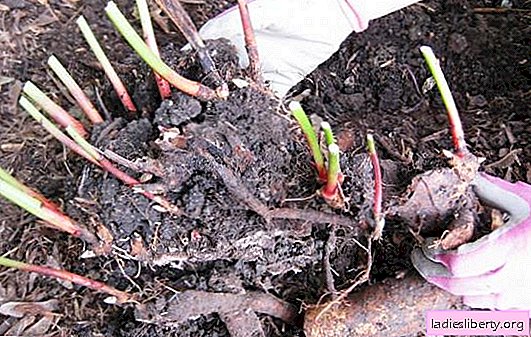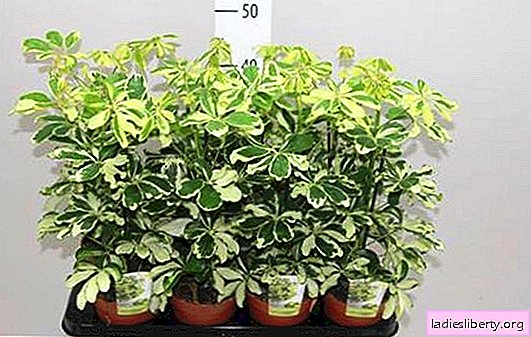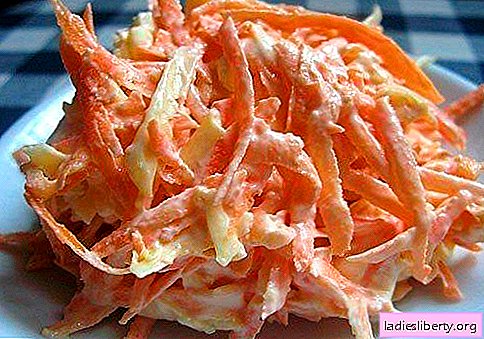
Peony, with its large noble flowers on tall stems, surrounded by lush foliage, enjoys the special love of gardeners.
This herbaceous plant without the help of humans forms a picturesque bush up to 1 meter high and has been growing beautifully in one place for decades.
All this is true with proper fit and proper care.
Sometimes circumstances arise in which the best solution is to transplant peonies. Autumn transplant is necessary:
• for propagation of the desired variety;
• if flowering does not occur or flowers grow smaller;
• when changing the layout of the garden.
Peony transplant: why in the fall?
For a successful wintering and subsequent growth, a young plant requires a well-developed root system. Active formation of the underground part begins when the heat subsides, daylight hours decrease and plants begin to prepare for winter. From the leaves and stems there is an outflow of nutrients to the root, as a base for flowering in the next season. There is a bookmark replacement kidneys for several years in advance.
The future flowering in spring directly depends on the development of the root in autumn. Peonies transplanted in September - October, have time to adapt in a new place, to build up a sufficient root mass and a network of accessory roots that provide nutrition to the entire bush. A young plant can bloom in the spring.
Helpful advice! Very pleased beginner gardener flowers that appeared in the first year after planting. But it is better to cut off the first buds so as not to deplete the fragile bush. All nutrients will go to the formation of leaves and root, which will ensure full bloom in the second year.
In spring, all the forces of nature are directed to growth and flowering. If the transplant is carried out at this time, the root, not having time to gain strength, is forced to provide nutrition to a rapidly growing bush. He will be able to form himself, be nourished by himself, only next fall.
Spring temperature differences and summer heat are easier for wintering rhizomes to tolerate. Based on many years of practice, specialists involved in the cultivation of this culture, insist that peonies need to be transplanted in the fall.
Soil preparation for autumn peony transplantation
Peony is able to bloom for more than 50 years without transplant, if it grows in a good place. Choose the perfect plot:
1. Peonies love the sun, they can even respond to slight shading by stopping flowering. The site is chosen light, protected from drafts.
2. Walls of buildings, fences should not be next to the flower garden. On sunny days, they shield heat, and peonies do not tolerate overheating.
3. The root easily rots even with temporary stagnation of water, therefore good drainage is required. With a close occurrence of groundwater, a high bed should be arranged.
Preparation of a site for peonies with an autumn transplant begins in the summer. Landing pits should be prepared in a month. Given the diameter of the future bush, the distance between the holes is measured from 1 to 1.5 m. The depth and width of the pit is about 70 cm. This is necessary for the full development of the root system. If you process only the top layer, then reaching a dense soil, the root will begin to grow to the sides, it will become more vulnerable to overheating, frost, it will lose part of the necessary nutrition.
Drainage is placed in the prepared hole (sand, stones, chopped branches, expanded clay), and two-thirds are filled with soil mixture (earth from the garden, sand, humus). Fertilizers are applied: 50 g each of superphosphate and potassium chloride, a tablespoon of iron sulfate, two glasses of bone meal and wood ash. Mix and water well. Before planting, the ground should be compacted.
Peonies grow well only on neutral soils, if the soil is acidic, liming will be required. You need to check the acidity regularly, because any application of fertilizers acidifies the soil.
Attention! Peat has an acidic reaction; therefore, it is not used when growing peonies. It is advisable not to use it even for mulching and shelter for the winter.
The correct division of the bush of peonies when replanting in the fall, photo
What could be simpler than dividing the overgrown rhizome into parts and planting it like new plants? But here there are some subtleties:
• before you dig out the rhizome, cut off the aerial part of the plant;
• dig around with a shovel, carefully take out the root with a pitchfork;
• do not pull on the stems - there is a danger of damaging the kidneys at their base;
• After slightly shaking off the soil, leave the rhizome in the shade for several hours (the root will become less fragile).

Separate for planting is the lightest (and therefore young) sections of the rhizome, with several large buds. Such "dividers" of peonies for transplantation in the fall (pictured) are the best planting material.
To disinfect sections and faults, dividers are treated with a pink solution of potassium permanganate or sprinkled with wood ash. Remove old and pest damaged areas.
One of the important conditions when landing is to monitor the depth of the kidneys. On heavy soils from the top of the kidney to the surface of the earth there should be a soil layer of not more than 4 cm. For light soils 5-7 cm. It is important to regulate the depth throughout the life of the peony, flowering, as well as successful wintering, depend on this.
They fill the pit with ordinary garden soil, compact it and spill it plentifully. Autumn watering should be regular, to the entire depth of the root system.
It should be remembered that fertilizers in the planting pit are deeper than the level of young roots, therefore organic and mineral fertilizing must be applied with watering. Peonies respond well to the solution of rotted manure and complex fertilizers. The correct watering of peonies when replanting in the fall is shown in the photo.

What to do if a peony does not bloom?
Peony is a delicate flower that does not like extremes. Waterlogging, overheating, deep or shallow planting, acidity of the soil. Any of the factors can cause the bush to not bloom.
The main reasons for the "moodiness" of the flower:
1. Poor lighting. For full flowering peony needs 6 light hours per day.
2. Depth of landing. With a shallow landing, hilling will help, with an excessively deep one it is better to transplant correctly.
3. Protect the leaf mass of the plant, do not remove it until the first frost. When you cut flowers for bouquets, at least 2 leaves at the base should remain on the stem. You can cut no more than a third of the flowers from the bush.
4. Lack of nutrition. For lush growth and abundant flowering, the plant requires a lot of strength. In the spring, nitrogen feeding is appropriate; during the growing season, complex formulations are required.
5. The age of the bush. Within a few years, a young peony can gain strength and grow the root. Flowering will have to wait. An adult bush, when flowering stops, should be transplanted, separating the old rhizome and planting divisions with living buds.
As long as the root is viable and has kidneys on it, it can still be fixed. Transplanting peonies in the fall will allow you to rejuvenate the plant, propagate bushes, avoiding annoying mistakes. Peonies will certainly answer your attention and patience with lush flowering for many years.











